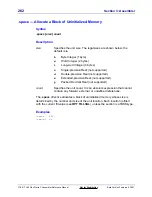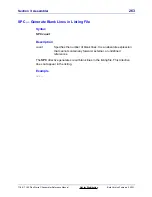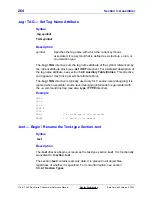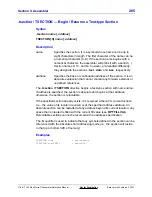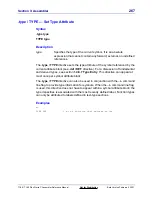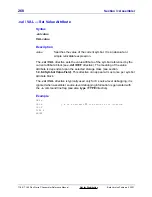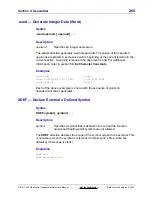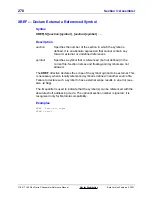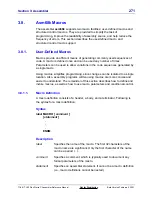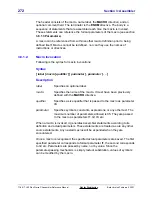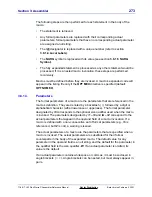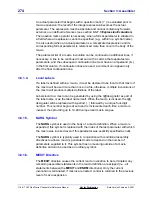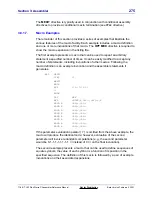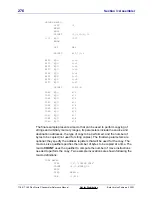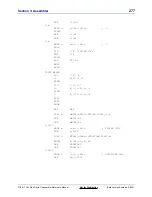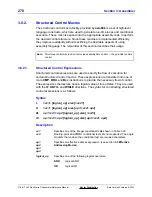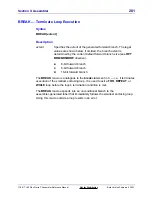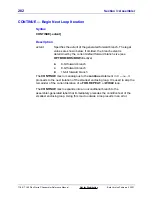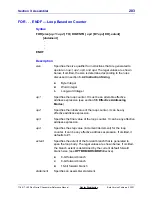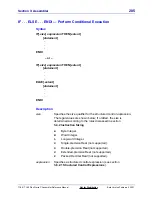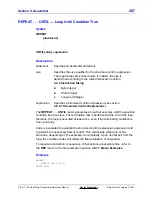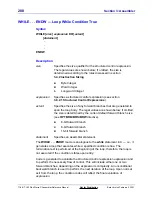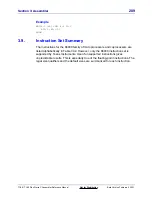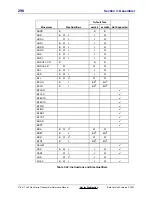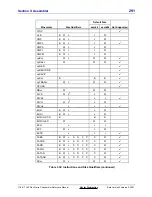
276
Section 3: Assembler
TI
-
89 / TI
-
92 Plus Sierra C Assembler Reference Manual
Not for Distribution
Beta Version February 2, 2001
VALUES MACRO
IFLT
\2
MEXIT
ENDC
VALUES
\1,?(\2-1),\3
\1\2
EQU
\3\2
ENDM
OPT
MEX
VALUES
BIT,7,1<<
BIT0
EQU
1<<0
BIT1
EQU
1<<1
BIT2
EQU
1<<2
BIT3
EQU
1<<3
BIT4
EQU
1<<4
BIT5
EQU
1<<5
BIT6
EQU
1<<6
BIT7
EQU
1<<7
VALUES
IDX,9,4*
IDX0
EQU
4*0
IDX1
EQU
4*1
IDX2
EQU
4*2
IDX3
EQU
4*3
IDX4
EQU
4*4
IDX5
EQU
4*5
IDX6
EQU
4*6
IDX7
EQU
4*7
IDX8
EQU
4*8
IDX9
EQU
4*9
The final example presents a macro that can be used to perform copying of
strings and arbitrary memory ranges. Its parameters include the source and
destination addresses, the type of copy to be performed, and the number of
bytes to be copied (not used for string copies). The final two parameters are
optional; they specify the address registers that will be used for the copy. The
macro’s size qualifier specifies the number of bytes to be copied at a time. The
macro COUNT uses the qualifier to compute the number of move instructions
needed to perform the copy. Two example invocations are shown following the
macro definitions.
COPY MACRO
IFNC
'\3','STRING COPY'
COUNT
\4,\0,MOVEQ,D0
ENDC
IFEQ
NARG-6
LEA
\1,A\5

